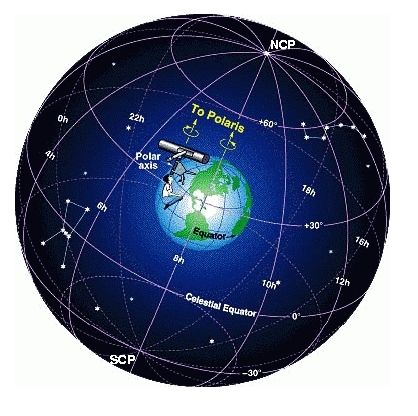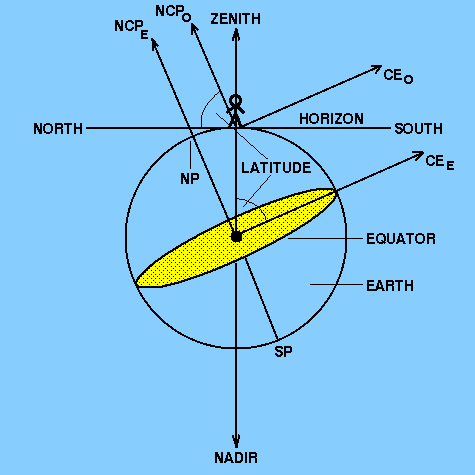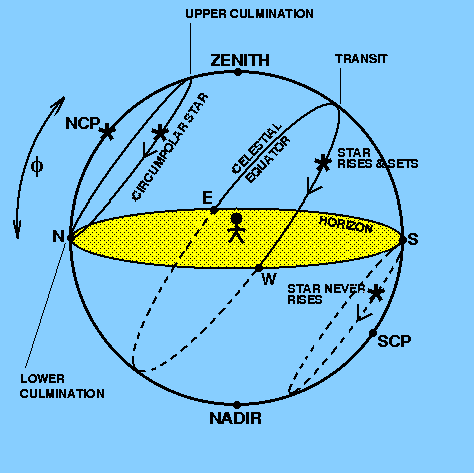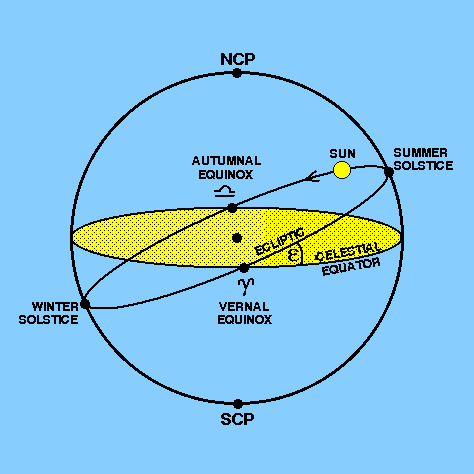| introduction |
|
| figure 9: |
The celestial sphere (©Sky Publishing Corp.). |

| figure 10: |
A northern-hemisphere observer's view of the celestial sphere. |

| figure 11: |
The motion of the stars as viewed by a northern-hemisphere observer. |

| figure 12: |
The ecliptic. |
